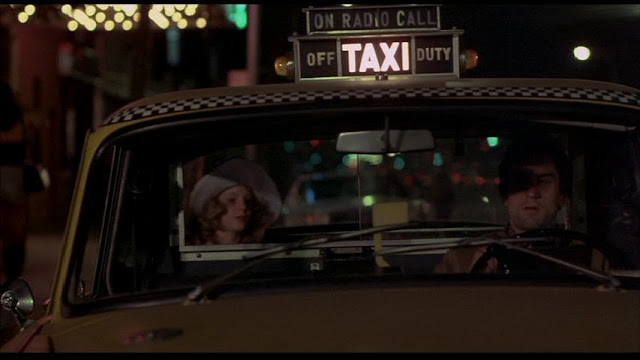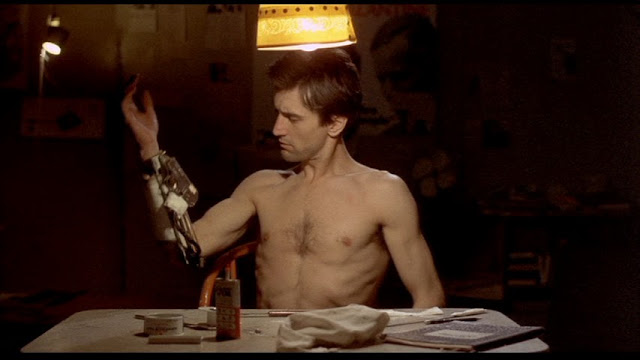 [Image at left from the Wikipedia 'The Girl with the Dragon Tattoo (2011 film)' page; "The Girl with the Dragon Tattoo Poster",[a] licensed under fair use via Wikipedia.]
[Image at left from the Wikipedia 'The Girl with the Dragon Tattoo (2011 film)' page; "The Girl with the Dragon Tattoo Poster",[a] licensed under fair use via Wikipedia.]Welcome to the analysis of The Girl with the Dragon Tattoo. This film is a 2011 Swedish-American psychological thriller based on the novel of the same name by Stieg Larsson. This film adaptation was directed by David Fincher and written by Steven Zaillian. Starring Daniel Craig and Rooney Mara, it tells the story of journalist Mikael Blomkvist's (Craig) investigation to find out what happened to a woman from a wealthy family who disappeared forty years prior. He recruits the help of computer hacker Lisbeth Salander (Mara).[b]
One of the underlying purposes of the making of The Girl with the Dragon Tattoo, is to provide audiences with a depiction of the extent to which the Western world has become a worse place in which to live over the last several decades, such as there being many families in which the father is largely or completely absent. According to the National Center for Fathering, "[C]hildren from fatherless homes are more likely to be poor, become involved in drug and alcohol abuse, drop out of school, and suffer from health and emotional problems. Boys are more likely to become involved in crime, and girls are more likely to become pregnant as teens."[c] Other modern-day problems include extramarital affairs being not uncommon, and the fact that journalists who go against the 'status quo' are routinely punished or displaced, by certain parties having various agendas. Some of the text accompanying the screencaps below, describes how the movie-makers depict various negative aspects of modern society, while other screencaps depict allusions to other films made within The Girl with the Dragon Tattoo.


Above left: Lisbeth's rapist (standing on left) is briefly portrayed in a sympathetic manner, when he offers to drive Lisbeth home after his rape of her. Above right: In a later scene in which Lisbeth wreaks extremely violent revenge on her rapist, what's being indicated is that women's commission of interpersonal violence can be more ruthless and remorseless than that committed by men. The two scenes taken together depict the fact that in the 'new world' of radical feminism, not only isn't there less violence against women, but women are allowed, and even encouraged, to strike out violently at men; for the radical feminist agenda is not truly to curb violence against women, but rather has as a primary goal, the sowing of discord between men and women. Lisbeth's announcement to the rapist before she tattoos him, that "there will be blood", is the key hint that references to other movies are being made within our film. (There Will Be Blood is a 2007 drama film written and directed by Paul Thomas Anderson).
.png)



Top left and right: The rectangular black keys of the computer keyboard shown in the opening title sequence of The Girl with the Dragon Tattoo (top left), represent small monoliths from Stanley Kubrick's 1968 film, 2001: A Space Odyssey (top right - the rectangular black object is a monolith). Above left and right: This 'subterranean-like' passageway in our movie (above left), lends a feeling similar to that of this passageway on an alien spacecraft, in the 1979 film Alien (above right).




Top left and right: The first room Blomkvist checks upon his first viewing of his new residence, is the bathroom (top left). This is like astronaut David Bowman checking out the bathroom carefully in the 2001: A Space Odyssey 'hotel' scene sequence (top right). Above left and right: This plate of food and wine glass in The Girl with the Dragon Tattoo (above left), is meant to be an allusion to the meal David Bowman is shown eating in the 'hotel' scene in A Space Odyssey (above right; click image to enlarge).




Top left: A subway thief steals Salander's backpack. Top right: Instead of letting the thief go, Salander runs after him and attempts to start a fight. Above left: Even after the thief has clearly let go of the pack, Salander looms over him in a threatening manner, instead of taking advantage of this opportunity to get away. Above right: Now that Salander has egged on the thief, he goes after the pack again instead of running away, even though at least one bystander is in the process of calling the police (below left). Obtaining this particular pack has now become a matter of honor for the thief. Note that even at this point he's still only going after the pack - he's not physically attacking Salander's person; this is illustrative of how men virtually always 'hold back' when it comes to harming women. Salander eventually fights off the thief and recovers her backpack, but ends up with a broken computer screen (below right) due to the fighting.





Top left: Lisbeth rinses out her mouth after having forced oral sex. Top right: Blomkvist sprays breath freshener in his mouth. This scene being shown very shortly after Lisbeth's mouth-rinsing, is meant to suggest a link between Lisbeth and Blomkvist. In essence, each is 'contained' within the other, as suggested by the image on the movie poster (at the top of this post); therefore, they represent the complementarity of yin and yang. Above left: In the 'new world', casual sex via 'pick-up' is common among both straight and gay persons. Lesbianism in particular has relatively wide acceptance. Above right: As indicated by the failure of Lisbeth and Mikael to get together at the end of the movie, the situation in our new world is one in which yin and yang never unite in any kind of final manner. Speaking alchemically, if there is no chemical wedding then there is an incomplete citrinitas, and thus no rubedo (i.e., the alchemical process is incomplete). Note that Salander's hairstyle in this scene makes her appear as if she is wearing a Jewish kippah on her head.
a. Poster for The Girl with the Dragon Tattoo: The poster art copyright is believed to belong to Columbia Pictures.
b. Wikipedia, 'The Girl with the Dragon Tattoo (2011 film)'. Web, n.d. URL = http://en.wikipedia.org/wiki/The_Girl_with_the_Dragon_Tattoo_(2011_film).
c. National Center for Fathering, "The Consequences of Fatherlessness". pp. 1, 2. Web, n.d. URL = http://www.fathers.com/statistics-and-research/the-consequences-of-fatherlessness/.
































